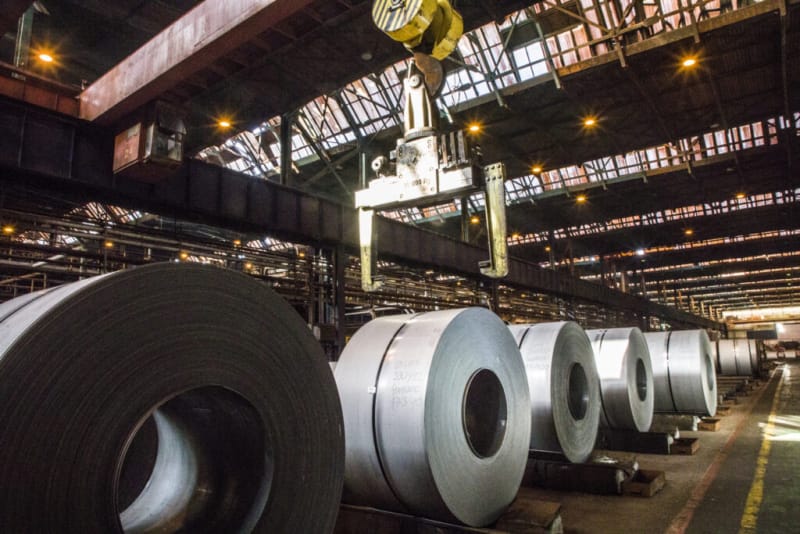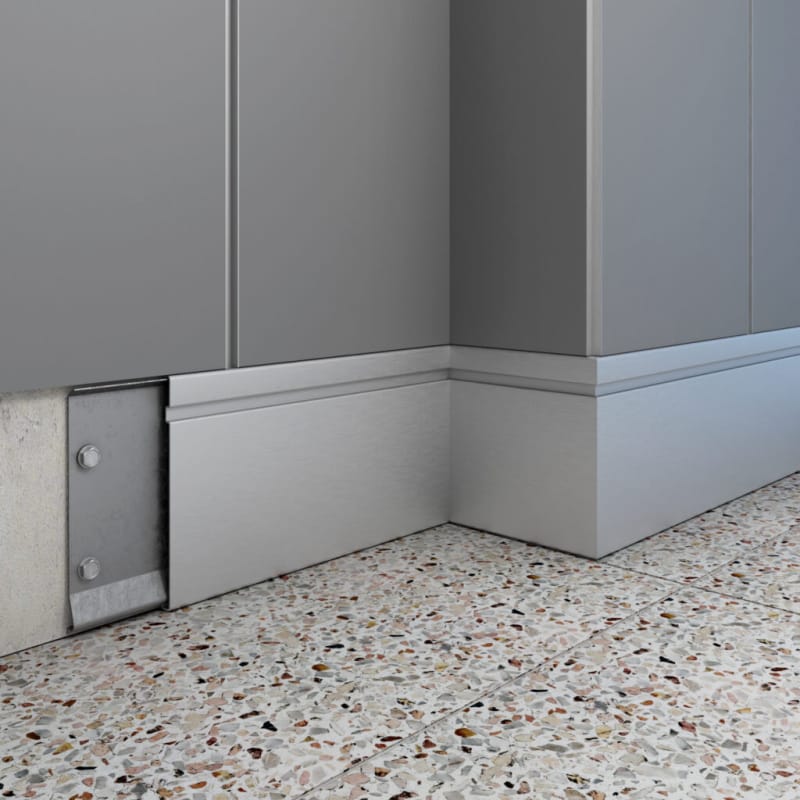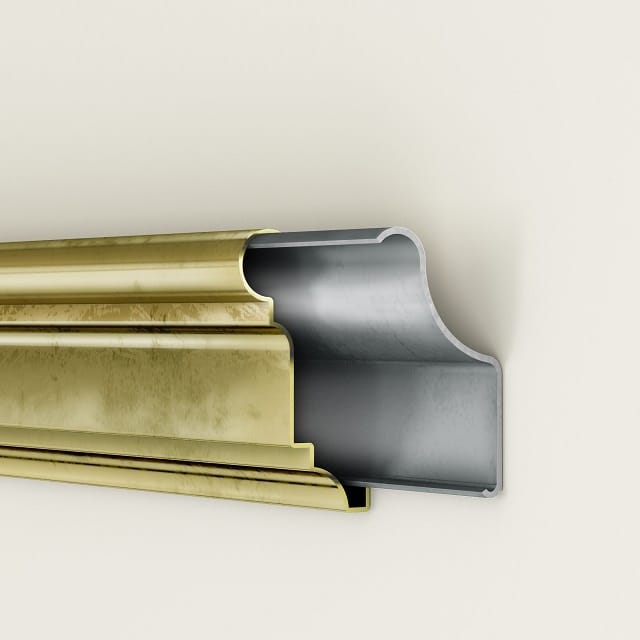ROLL FORMED PRODUCTS: A GUIDE TO THE BEST MATERIALS

A great engineering or architectural project always starts with the ideal metals. Miss the mark, and you’re left with an expensive product whose quality may be lacking.
Not only does this slow down your progress, but it reflects badly on the roll forming provider as well.
It’s time to educate yourself on the pros and cons of the most popular materials for roll formed products so you start your vendor on the right path. After all, roll forming companies want what’s best for you and your project.
Let’s break it down into well-organized categories:
POPULAR METALS IN ROLL FORMED PRODUCTS
If you’re trying to decide which metal will be the best for your roll formed product, there are several traits to consider:
- Formability
- Strength
- Cost
- Outdoor use
- Looks
Once you combine and consider all these factors, you’ll be able to make the best decision for your roll formed part.
Carbon/Alloyed Steel Roll Forming
At times, designers specify a level of carbon content in these roll formed steels to improve their strength or formability.
Formability: High-strength alloyed steels have unusual properties and springback that create challenges for roll formers. In some cases, your manufacturer must overbend by 25 degrees or more to achieve a 90-degree bend.
Mild steels, with carbon content not exceeding about 0.20%, are easy to form and weld. Steels with higher carbon content (about 0.4% to 1.0%) can’t be welded with the usual processes, but they can receive heat treatment.
Strength: Many alloyed steels are extremely strong. Mild steels’ hardness and strength cannot be increased by heat treatment. Steels with higher carbon content have better yield and strength.
Cost: A thin, inexpensive carbon steel can take up just 40-50% of your part cost. Controlling the chemical composition costs vendors more, so buyers must pay more for metal whose chemical composition has been specified.
Outdoor Use: Because it’s the most affordable of the metals we’re discussing today, galvanized steel sees heavy use outdoors. But some lighter zinc coating galvanized surfaces don’t offer the same protection as stainless or copper; they’re best relegated to indoor use. If yours is an outdoor project, make sure you’re using the best exterior metal grade.
Looks: Carbon steel ain’t pretty. If looks matter to your project, look elsewhere. Powder paint and liquid paint coating are common to protect carbon steel. You will get protection and the exact color you want while taking advantage of the low cost of plain carbon steel.
Other: Steel is heavy. If portability matters to your project, try a lighter metal like aluminum.
Roll Forming Stainless Steel

Stainless steels have mid-range heaviness and come in a large variety. Their properties vary greatly based on alloying elements, heat treatment, and more.
Formability: Most stainless steel can be formed similarly to the carbon steels, but consider its hardening properties and high springback when making your design. Stainless typically falls into one of three major classes:
- Austenitic stainless steels are ductile, but work hardening limits forming. The most commonly used alloys of this group are 304 and 316.
- Ferritic. Some 400 series types have limited ductility and, therefore, restricted formability. Some alloys work-harden quickly, and it’s tough to weld them.
- Martensitic. This steel, with the exception of 403, 410, and 414, cannot be cold formed.
Strength: Stainless’ strength and corrosion resistance often make it the material of choice in guns, engines, and other transportation equipment..
Cost: More expensive than carbon steel and aluminum, stainless reaches up to 80% of your total price. Unfortunately, the extra power your vendor must use to form stainless steel increases your labor costs.
Stainless costs are still cheaper than luxury metals, and Ferritic 400 metals are cheaper than 300s.
Outdoor use: Stainless steel is desirable for outdoor commercial and industrial purposes. Why? See the next paragraph.
Looks: Who doesn’t love stainless steel’s clean look? Its chromium oxide layer is what makes it shine so beautifully.
Stainless steel has a high percentage of chromium and other elements, making it resistant to staining, rust, some caustic materials, and heat. It does require occasional cleaning. Stainless steel also comes in a variety of brushed and polished surface finishes.
Other: Stainless steel is hygienic since it’s resistant to abrasion and easy to clean — perfect for hospitals and labs where sterility is crucial.
Roll Forming Aluminum
First off, don’t specify your material simply as “aluminum.” There are numerous aluminum alloys, and their properties vary greatly based on alloying elements, heat treatment, etc. The 3000 series of alloys, such as 3003, 3004, and 3105, are the most popular.
Formability: Overall, roll forming of aluminum is not as difficult for your vendor as forming steel. It’s soft and malleable. Most aluminum shapes are extruded but if you would like to use a sheet thickness below 0.06”, roll forming is your best bet.
Strength: Aluminum is generally strong, including mid-high tensile strength. As aluminum oxidizes, it creates a layer around itself. Manufacturers can force this via anodizing, immediately strengthening the metal. However, since aluminum types are all over the map in terms of characteristics, make sure you grab the right grade.
Cost: Reasonable.
Outdoor use: Aluminum is typically not designed to last for a long time outdoors.
Looks: Aluminum will oxidize. Notably, aluminum doesn’t need a protective coating — anodizing leaves it with a polished finish.
Other: Aluminum is lightweight and is easily transportable.
Copper, Brass, Bronze Roll Forming

Copper features prominently as a primary component in other nonferrous alloys. Brass is a copper and zinc alloy featuring a bright, gold-like color. Bronze, a type of brass, is an alloy of copper and tin.
Formability: Copper is a ductile metal. More ductility equals easier roll forming for you vendor, which in turn equals better odds of success.
Brass is very malleable and versatile. When it comes to architecture, the red metals and aluminum are the most common nonferrous materials. They are the easiest to manipulate into designs.
Strength: The “red metals” maintain strength after being formed. These metals are equivalent to stainless steel in resilience or form, but not as strong structurally. They are incredibly durable; once oxidized, they’re immune to the elements.
Cost: Well, they are called luxury metals — so you’re correct if you guessed they are quite expensive.
Outdoor use: The metals feature prominently in building materials. They can last hundreds and hundreds of years.
Looks: They’re best for applications in which beauty counts. With a red metal, your project will stand out. Brass, for one, has a bright, gold-like color and a high resistance to corrosion. But be aware that red metals turn somewhat green if they oxidate.
Other: If these metals’ prices are unrealistic for you, it’s possible to clad your part instead.
LET’S SUMMARIZE YOUR NEEDS
When requesting roll formed products, ask yourself:
- “Is my company strapped for cash?”
- “Are looks important?”
- “Does my project need to hold up against tough conditions?”
- “Is my project structural or otherwise in need of a strong metal?”
- “Is it worth requesting a metal grade that’s difficult to form to get the features I need … or am I just wasting resources?”
Knowing the answers to these questions will help you make the best decision on which metal to use for your roll formed product.

Leave a Reply